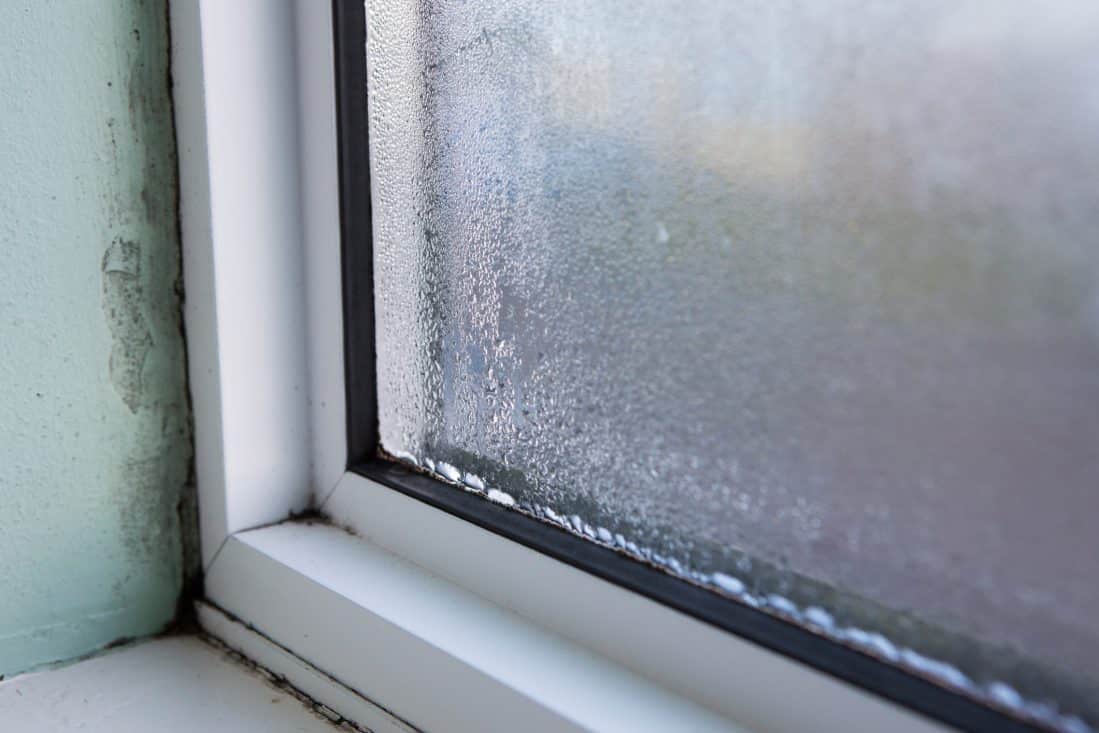
There are few things worse than seeing mould in a home. It’s ugly, discolours the surfaces it grows on, and can cause many different health problems. In short, this is a severe problem in your home. There are a variety of causes, but the most common is condensation.
So, how do you prevent condensation in the home and therefore reduce the chance of mould growing? Let’s review a few different strategies.
First, it’s essential to understand what condensation is so that we can understand how to manage it.
All air contains a degree of water vapour. This is why it rains, and why there is sometimes dew on the ground in the morning. The temperature of the air determines how much vapour it can hold. In general, the warmer the air, the more vapour it can hold. This is why we get hot, humid summers and cold, dry winters. Hot air holds more water vapour; as the air cools, it loses its ability to hold vapour, which then forms into water droplets. On an immense scale, when a cold front cools hot air, we get rain. Inside a home, we get condensation.
Two kinds of condensation occur in homes.
The first is surface condensation. This is the most apparent sort; windows become foggy or even have water droplets running down them, the sides of a refrigerator get damp, and the bathroom never seems to get dry.
The second type is interior condensation. This happens inside the building structures of the home, including the walls and floors.
It’s important to note that condensation may not appear in the rooms where moisture is being produced (the bathroom and the kitchen are the most common culprits), and these rooms may stay quite warm. It’s when this warm, damp air moves into other rooms that problems occur.
Internal condensation can be effectively prevented during construction, as discussed by the Cement Concrete Aggregates of Australia. Condensation is controlled in two ways: first, vapour barriers are used to prevent vapour moving either into the home (a bigger problem when the home is cooled in warm weather) or out of the home (when the home is heated in cool weather). In environments where homes must be cooled and heated depending on the season, it’s crucial to consider vapour barriers in both directions.
Alternatively, builders can use materials that keep the air at a consistent temperature until it reaches the outside, preventing condensation from forming inside the walls.
Surface condensation is prevented by controlling the home environment, as discussed by the Energy Efficiency Advice Centre. First, try to prevent moisture from lingering in the home. Try to:
Use the exhaust hood on your stove or cooker to pull moisture out of the kitchen.
Boil water with the pot lid on.
Use an exhaust fan in the bathroom or open a window.
Put cold water into a bath first, then add hot water. This reduces steam.
Dry clothes in the bathroom with a door closed and a window open rather than on radiators.
Cross-ventilate the home by opening windows on opposite sides of the home and opening the doors between the two spaces. This allows drier air to circulate through.
Other strategies include keeping space between furniture and walls, improving insulation and draft proofing, and making sure the home is evenly heated or cooled.
Sometimes people will heat or cool only a certain area of the home in an attempt to save money; this makes condensation in the unheated or uncooled rooms much worse and can lead to long term problems that are much more expensive to deal with.
Mould grows best in continuously damp spaces. If condensation is pooling in specific areas, then they are likely to become mouldy. Mould releases spores which can create health issues for people with allergies or other respiratory diseases.
So how do you treat mould in your home?
First, wipe down the condensation from all windows, surfaces, and window sills every morning. Wring out your wet cloth instead of leaving it on a radiator to dry.
Next, clean any areas where mould has developed. There are many natural antimicrobial options to clean small areas of mould.
If you are not sure of the exact cause of the mould in your home, it could be worth calling PureProtect to arrange an assessment, it’s important to know what is exactly the root cause of the mould. It’s also crucial to determine and manage the root cause of the condensation. Without managing the actual problem, the mould will just come back, and you’ll need to start all over again.
By following these tips you can prevent or minimise the damage condensation causes in your home. You can improve your indoor air quality and thereby improve the health of all the people who live in your home.
You are not on your own as you try to manage these problems. If you have any questions at all, you can contact the PureProtect on 1800 664 602.
We can also offer help with any questions you have about your specific home. If you rent or lease your home and are seeing systematic problems, they may be able to help you reach out to your landlord and ensure that these improvements are made. Don’t suffer with mould; get in touch today.
PureProtect Pty Ltd © 2020. All rights reserved